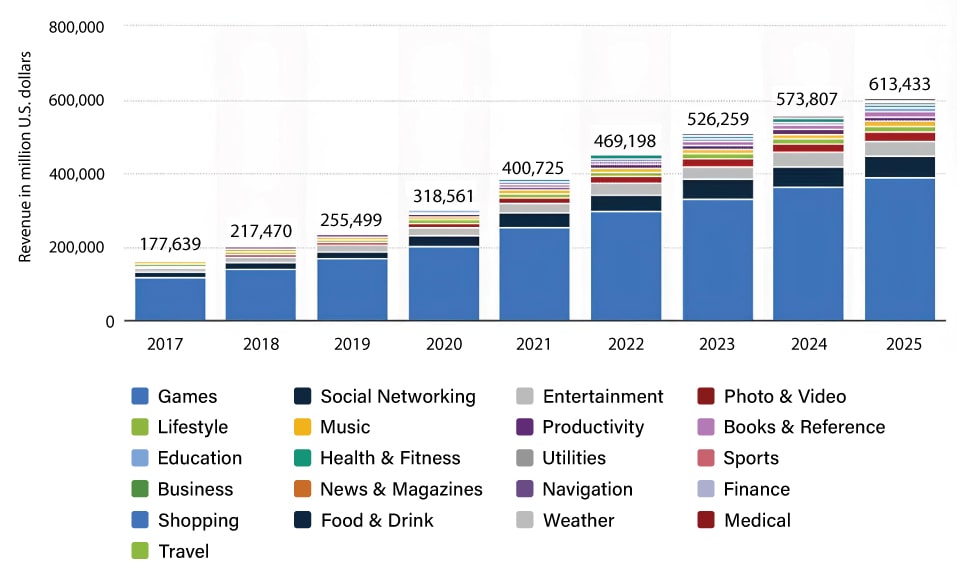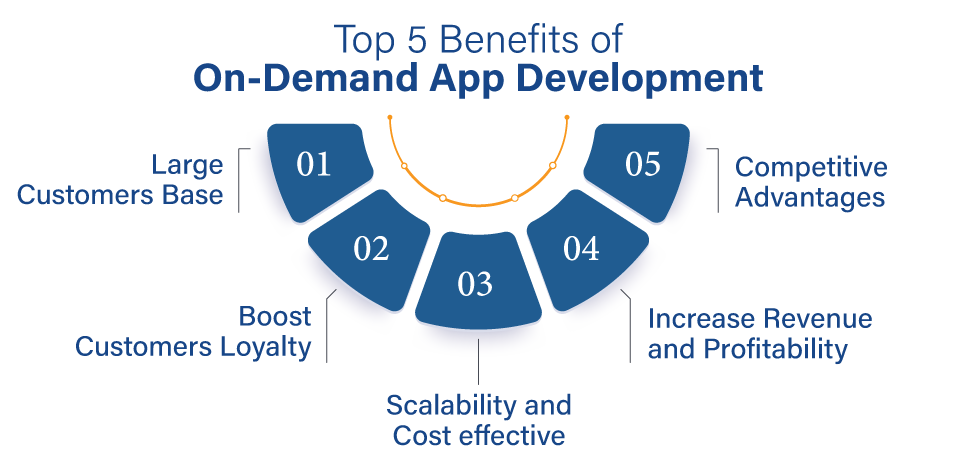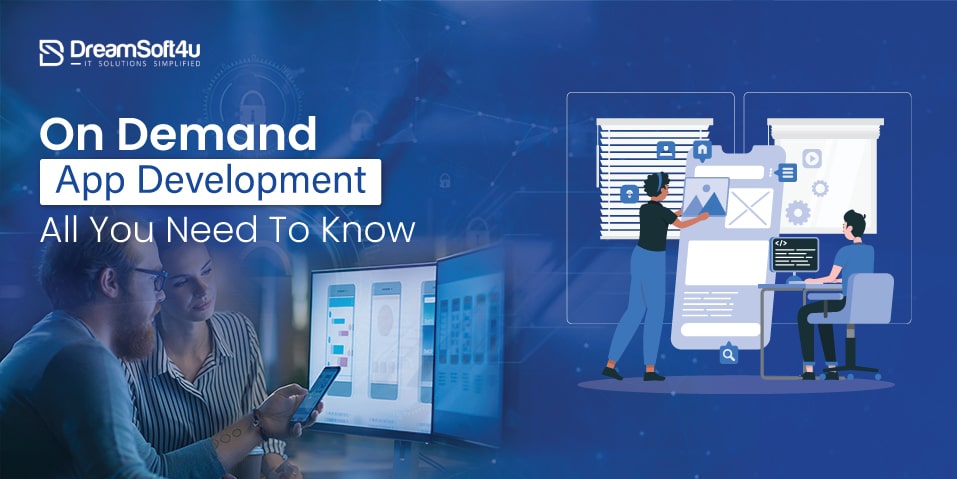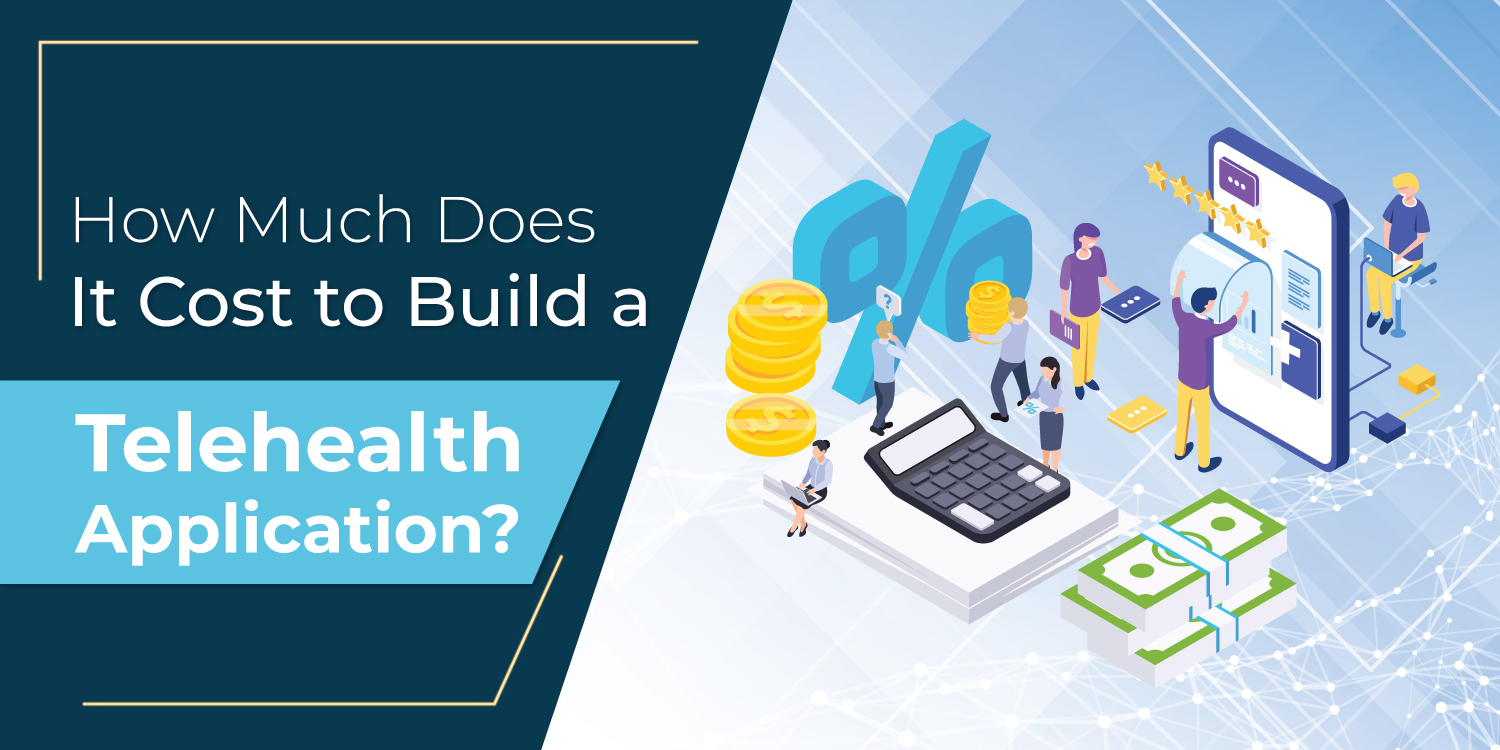We are living in a world of evolution where things are changing rapidly. People’s lives are getting comfortable by providing everything via on demand apps.
Nowadays, customers are looking for instant gratification. They want a hassle-free process to get their products or services. This is where on demand apps are fulfilling today’s needs.
Whether it’s ordering food or groceries, booking a cab, movie tickets, video consultation with a doctor, or ordering any products. Customers can now get these services to their doorstep. It’s changed the way customers get these services previously, and that’s why this on demand solution is here to stay.
So, if you’re also planning to build an on demand app for your business, then this guide will help you plan everything about it from scratch to make informed decisions.
Here, we will understand on demand apps, benefits, and how you can build an on demand app.
Table of Contents
ToggleOn Demand App: Overview
On demand apps are usually web apps or mobile apps that allow customers to order any service or product with just a few clicks through their smartphones whenever needed. It’s the most convenient and comfortable way for customers to get the service or product on their doorstep whenever they need it with just one tap away.
Some of the best examples of using on demand apps are online booking of a cab or hotel, movie tickets, cleaning service, Netflix, virtual doctor consultation, groceries at the doorstep, and much more.
These on demand apps are used in people’s day to day lives, and they have now become a major part of their lifestyles. That’s why most businesses are now offering on demand apps to connect with customers and grow business personally.

Types of On Demand Apps Models
There are mainly three types of on demand app models:
1. Business to Business
B2B on demand apps are those which connect one business to another business for their logistics. It acts like a medium platform to connect both businesses in one place with easy accessibility. Some of the best examples of B2B on demand apps are UpWork, Salesforce, Trello, etc.
2. Business to Consumer
A B2C on demand app connects businesses to their customers directly to offer their goods or services to whoever needs them. These B2C apps list the services or goods in an appealing way that allows customers to easily explore whatever they need and connect to the service providers conveniently. Some popular examples of B2C apps are Starbucks, Agoda, Doordash, Instacart, etc.
3. Consumer to Consumer
C2C is also known as P2P (Person to Person) and it’s an on demand platform which is used by users to buy or sell goods or services. On one side users sell their services or goods and on the other sider, a user looking for those services or goods on the same apps and they make transactions through the app then it’s a C2C on demand app. One of the best examples is Uber where customers are looking for tax services and another taxi driver provides the services they connect over the app and make transactions.
These are the three types of on demand apps; you can choose which type of services or goods you’re offering and whom to target.
Read Also: Matrimony App Development
Most Common Features for On Demand Apps
If you want to build an on demand application, then make sure you have you’re these features in your app:
For Customers side App Features:
- Login Page: An on demand app must include a login page that allows customers to quickly login using a number, Gmail, or social account for access to the app.
- Geolocation: Geolocation is one of the essential features where apps can detect a customer’s exact location and showcase the nearby services or goods to order. Also, it allows users to change the location to order from their desired location.
- User Profile: Having a user profile allows customers to track their order history, wishlist, purchases, address details, and other past activities.
- Push Notifications: Push notifications are something that users will keep receiving on their smartphone whenever they make any activity for confirmation like order purchased, tracking real time orders, payment successful or declined, etc. These notifications help users keep confirming their actions and what they’re doing.
- Book or Schedule Request: An on demand app must add a book or schedule request feature that allows users to book or schedule their order instantly with one tap.
- Multi payment Modes: The on demand app must have multiple payment modes that allow users to make payments from their suitable payment options, including debit/credit, wallets, COD, etc. It makes buying decisions faster and encourages customers to pay in one tap.
- Help and Support: Having an excellent customer support system is a must in an on demand app that helps resolve users’ queries instantly and builds a strong connection between users and the brand.
- Review and Ratings: Data is essential for brands to identify whether the customers are getting the satisfaction or not. That’s why adding a review and rating option allows users to give honest feedback after the service or product and encourages brands to provide the best quality. Similarly, showing previous reviews and ratings helps users to make buying decisions.
For Service Provider App Features:
- Service Provider Profile: On demand apps must have a service provider profile option to register as a service provider, offer the services on the app, and let customers check their profile and order it easily.
- GPS Support: By using GPS, service providers can showcase in which area they’re offering the goods or services. Also, service providers can change the location to offer services in different areas as per their suitability.
- Earning Dashboard: It is the essential feature, i.e., an earning dashboard where a service provider can check the earnings in the real time dashboard and other details like the number of orders, revenue generated, delivery status, etc. It helps service providers to be alert to how the business is growing.
- Start to End Service: Whenever an order comes to the service providers, they can track the complete journey from getting the order to finishing the service successfully. It helps service providers and customers to stay up to date about their orders.
- Accept or Reject Orders: A service provider has the option to accept or reject orders as per their time suitability.
- Push Notifications: A service provider will also receive push notifications on the app whenever any order is received, completed, or any feedback.
- In app Calls and Messaging: It’s another important feature where a service provider can directly contact via call or message on the app to interested customers to provide more information about the services and end up getting orders.
- Online or Offline Status Mode: Sometimes, service providers are planning to take a break, and then having an online or offline status in the on demand app helps them to showcase their service availability as per their suitability.
Top 5 On Demand App Ideas for Different Industries
Here’s the list of five most popular mobile app development trends you can consider:
1. Telehealth
After the pandemic, the rise of virtual doctor consultation is at its peak, and there are various on demand Telehealth apps available where patients can virtually connect with doctors, get appointments, e prescriptions, reports, bill payments, and much more without physically being available. As emergencies can arise anytime, telehealth apps like GoodRx, ZocDoc, and Doctor on demand are very helpful because they can connect doctors and patients on the same platform and make it easier for patients to get care anytime in just one tap. It’s an all time high demand idea that you can start by hiring a On demand telemedicine app development company and getting professionals to set up your app.
2. Food delivery
An on demand food delivery app connects restaurants to customers whenever they need it. These apps are interactive and user-friendly, where customers can scroll the list of restaurants near their location and order food from any picked restaurant. This transaction is made on the middle platform—some of the popular food delivery apps like Zomato, Uber Eats, and Grubhub.
3. Grocery delivery
Online grocery shopping is now so common that everyone is getting groceries at their doorstep. There are various on demand fresh grocery delivery apps available that allow users to order groceries from their nearby grocery store. Some big names around online grocery delivery apps like Amazon Fresh and Walmart Grocery.
4. Parking
As the traffic is increasing day by day, the usage of parking apps has also risen above. There are various on demand parking apps available that users can use to find the available parking spot near the location to park their car. And you can pay for it to book the parking spot in advance. Some of the best parking apps are ParkWhiz, BestParking, SpotHero, etc.
5. Taxi booking
Gone are the days when people waited for a taxi. Now, they can open the cab booking app, find a nearby cab, and book instantly with a few clicks. That’s how convenient it becomes for customers to not wait for the taxi and get to the doorstep at their suitable time. It’s one of the profitable on demand app ideas that is highly used every day. Some popular on demand cab booking apps are Uber, Ola and Lyft.
Top 5 Benefits of On Demand App Development
There are several benefits of on demand app development for organizations and customers. Let’s explore some top most reasons:

1. Large Customers Base
According to statistics, currently, there are 6.93 billion smartphone users globally. It’s a big opportunity for businesses to capture the market by building on demand applications. So, if you build an on demand application then you’ve a large customer base to capture and grow your business. Because on demand apps are used in people’s day to day lives and there’s a huge market for businesses to fill the space.
2. Boost Customers Loyalty
When you’re offering an on demand application where your customers can easily get the services whenever they need them in just one tap, then it builds a strong connection between the brand and customers. They can directly get the services at the doorstep, and businesses can keep interacting with customers on the app and on demand seamless processes that provide a positive experience to customers that boost customers’ loyalty to the brand.
3. Scalability and Cost effective
Building an on demand app is a cost effective and scalable option because it allows businesses to build a platform where businesses and customers can connect each other and make transactions. So it’s going to be cost effective on demand solutions and allow us to scale as per the features required for business growth and entering in the new market.
4. Increase Revenue and Profitability
On demand apps are a medium to connect businesses and customers in one place, and that opens the potential to scale without limits. So, it overall leads to more revenue and profitability in the business.
5. Competitive Advantages
Businesses are facing cutthroat competition in today’s world. And in order to stand out, they need to focus on future demand. According to the PWC Report, the revenue from on demand mobile apps is expected to reach $335 billion by 2025. On demand apps are the future, and their demand will grow over time. So, it’s a best fit solution for businesses to build a mobile application for their relevant industry and stand out from the competition.
How to Build an On Demand App?

Step 1. Define Your Target Market
First thing you need to decide before starting to build an on demand app is for whom you’re building an application, which industry, and what the use of your application. You need to ask these questions and find out the answers. It will help you to properly plan out the way and take directions on the forward side.
Step 2. Research Competitors and Existing Solutions
Once you have an exact idea about your app and targeted audiences, then start searching for the existing competitors and look at their on demand app, their functionalities, UI/UX design, weaknesses, USPs, pricing, and customer feedback, and based on the overall data, you can make an informed decision to build an on demand app with better functionalities and USP to stand out from the competition.
Step 3. Choose an On Demand App Development Company
Choosing a custom app development company is a great idea because these professionals have years of experience building applications, and they can build custom on demand apps for your business that match your business look and feel. You need to find the best app development service provider and let the professional build an on demand app for your business.
Step 4. Finalize the Key Features and UI/UX Design
Now, it’s time to build the core part of your on demand app, i.e., features. You need to make a list of features that you want in your on demand app. We’ve already listed some of the most essential features that you can consider and some you can finalize after the competitor’s research.
Step 5. Build an App
Let’s build an app because now you’ve all the necessary details about your app, including the type of app, targeted audiences, UI/UX design, unique features, and end goal to achieve after using the app. You can share all these details with an on demand app development company
and let the professional build a small prototype (or MVP) initially to ensure you’re building the right on demand app. Once you find the demo app suitable, then you can finalize the required changes and build an on demand app for your business.
Step 6. Test and Launch in the Market
After on demand app development, you need to do detailed testing in multiple ways to ensure it works perfectly, generate the desired output, and ensure that each feature works correctly. Once you’re satisfied with the testing, then you can launch it in the public for users.
Why is DreamSoft4u the best solution for your On Demand app development?
DreamSoft4U is a trusted name in custom healthcare software development and has 19+ years of industry experience to deliver you custom on demand apps for your business. Our professionals will stay connected with you, understand your requirements, and work until satisfaction. Get in touch with our experts today!
Looking for an end-to-end cloud solution for your business?
Get in touch with our team of certified developers for a cost-effective solution
Wrapping Up!
On demand apps are here to stay, and most businesses are planning to build on demand apps for growth and scalability. This guide helps you understand everything about on demand apps, their features, benefits, types of on demand apps, and how you can build an on demand app for your business.
FAQs
Q.1 What is the timeline for building an on demand app?
When it comes to building on demand apps by professionals, it will take 3-6 months. It also depends on the complexity of features and UI/UX design.
Q.2 What technologies are used during the on demand app development?
The technologies used to build on demand apps include Python, JavaScript, Swift, Java, Rust, Kotlin, Objective C, and others.
Q.3 How much will it cost to build an on demand app?
The average cost of on demand app development for Google Play Store and App store ranges from $15,000 to $50,000. It also depends on the requisitions, add on functionalities, and technologies used to build an app.
Q.4 What are the popular real world examples of on demand apps?
Some of the most popular examples of no demand apps are Uber, Instacart, DoorDash, Starbucks, Doctor On Demand App Development, and many more.



















